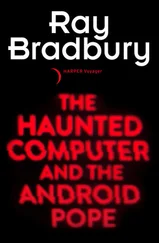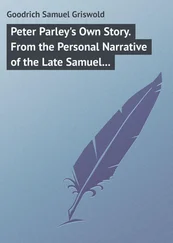Since there was no Apple in their booth to demonstrate the games, Jack asked if we wanted to show the games in our booth. The only problem was that our machine had only 16 K memory, and we needed 32 K to demonstrate the programs. That was easy to solve—we just opened our Apple and put Mioshi’s memory chips in. Mioshi agreed that after the show was over we could keep the memory chips as payment for letting them use the Apple. Those chips turned out to be a significant part of our profit from that show, along with about $200 we received from sales of our own games.
The way the games played and the way we felt when we played them, however, was far more interesting to us at that time than the profit-and-loss statements we’d face when we returned to Eugene. These were the first fast-action arcade games I’d ever seen on a personal computer. They were light years beyond anything I’d ever seen on the U.S. market so far. We played them ourselves because they were so tantalizing. Even though they weren’t even our products, the Japanese games turned us on so much that we began pulling people out of the crowd to try them. But this became frustrating when everybody wanted to buy the games that weren’t ours to sell in the first place. And Mioshi himself had brought only one copy of each game!
After the show, business began to look a little less fun. The TRS-80 games that had launched my programming and publishing careers gradually declined in sales. We were going broke fast. We then began writing versions of all our games for the Apple, having learned at the Faire that the Apple was an instant marketplace for new software in ways that we felt the TRS-80 was not. By June 1980, we had finished our first few Apple conversions.
Then we got an unexpected call from Mioshi, who was in Placerville. He wanted to fly to Eugene to discuss publishing arrangements. When he arrived, he brought ten copies of each of the games we had found so attractive in April. We then worked out an arrangement whereby we would buy one hundred copies at a time and store them in Placerville. From there Jack would ship them to us as we paid for them. Mioshi’s price, was we were to discover, was very high. But we were so anxious to get those games for Broderbund’s inventory that we were willing to lose money on the first ones we sold. One product cost us $10.50 each; when we started selling it to dealers we sold copies at 50 percent off the retail price of $19.95.
Our decision to start selling a product at a loss, in hopes of making the money back later in terms of a larger market base, was a fairly bold, if not ill-considered, strategem. By that time we had gone through all of the money I had saved from my law practices in Chicago and Maine (around $12,000), had borrowed $8000 from my relatives, and were approaching the limits on both my MasterCharge and VISA cards. The pressure was on, to say the least. Here were two promising Harvard graduates who were losing their money at an astonishing rate.
But at that point, another random event changed our fortune once again. In previous years, Gary had coached a women’s basketball team in Sweden, taking it to the national championships twice. Three of his former athletes were now visiting the United States on vacation and were headed for San Francisco when they called Gary and asked him to join them there. Of course he had no money to finance such a trip, but then a friend of his from San Francisco bought him a plane ticket to the Bay Area. He took a lot of software with him, and as his friends drove him to the city from the airport, he convinced them to stop at a few computer stores along the way so that he could try to sell some programs.
Computer stores were fairly new enterprises in the summer of 1980—certainly not the international chains that they are today. They were hungry for any software to sell along with the Apple II. (The TRS-80 was sold only through
Radio Shack, not computer stores, and the IBM PC didn’t exist yet.) The first day of Gary’s venture into traveling software salesmanship, he racked up several hundred dollars’ worth of sales. The next day he did even better. And since we sold on a cash-on-the-barrelhead basis, we were getting ahead of the game for the first time since we started the whole unlikely enterprise. Our sales had been less than $1000 a month since February and had sunk to zero in May. By the end of his stay in California, Gary had sold several thousand dollars’ worth of software.
We used some of the money Gary brought back from San Francisco to buy a few hundred more cassettes from the Japanese, and to finance a sales trip I took across the country in August. I sold our software out of the car and stopped at Idaho Falls, Salt Lake City, Denver, Chicago, Boston, Washington, D.C., New York City—in fact, at every place I could find a computer store across the northern tier. I sold fifteen or sixteen thousand dollars’ worth of programs on that trip, which really got things humming back in Eugene. No doubt about it, we were not only in the black, but it looked like we might actually be a viable company.
At about this time we realized that the higher-capacity and faster-running technology of disk-based software, which had been in existence for a while, would eventually become inexpensive and reliable enough to supersede the slower cassette-based programs in the marketplace. In fact, the disk format was becoming the standard medium for software by the end of the summer of 1980. With that in mind we began converting all of our own games from cassette to disk format and managed to convince our Japanese suppliers to do the same.
After I returned from my sales trip, a gentleman named Minoru Nakazawa showed up at our door in Eugene. He was the president of Star Craft, which created the software that Mioshi had been selling us. Nakazawa explained that Mioshi had kept a sizeable part of the money that we had paid for the product, a situation that was beneficial to Mioshi but not to either Star Craft or Brøderbund. Nakazawa asked us to make direct arrangement with him, and as he didn’t intend to sell any more software to Mioshi, we naturally went along with the suggestion. We worked out an arrangement that turned out to be much more profitable for us. We no longer had to store the programs in Placerville until we could pay for them; after our first check, he trusted us to pay him as we sold them.
In the last month of 1980, Brøderbund took off. With support from a distributing company called Robwin and later renamed Softsel, our sales never went below December’s level of $55,000 again. The following January, Computerland started carrying our products. We were selling fewer and fewer strategy and simulation games and more and more of our video game-like programs. In the meantime, I was still trying to do the programming while Gary handled the sales. I was also doing the books, and we had a phone with callwaiting installed. We were still located in the same house in Eugene, but at least we had moved beyond the living room. My bedroom was the product development department, manufacturing still went on in the living room, and the kitchen became our shipping department.
But soon we moved into a house with a large garage and hired three people to help with manufacturing and shipping. My bedroom was still the product development headquarters, but the Ping-Pong table in the garage became the center for assembling and shipping the products. In the spring of 1981 we expanded our product line to include Snoggle (a Pac-Man imitation) and Payroll, our first nonentertainment package. At about that time, our sister Cathy, who was then living and working in New York, quit her job and moved to Eugene to join us. She started out as office manager and bookkeeper, then took over advertising as well. I wrote my last program that summer, having given up all hope of doing serious programming while running the business.
Читать дальше










